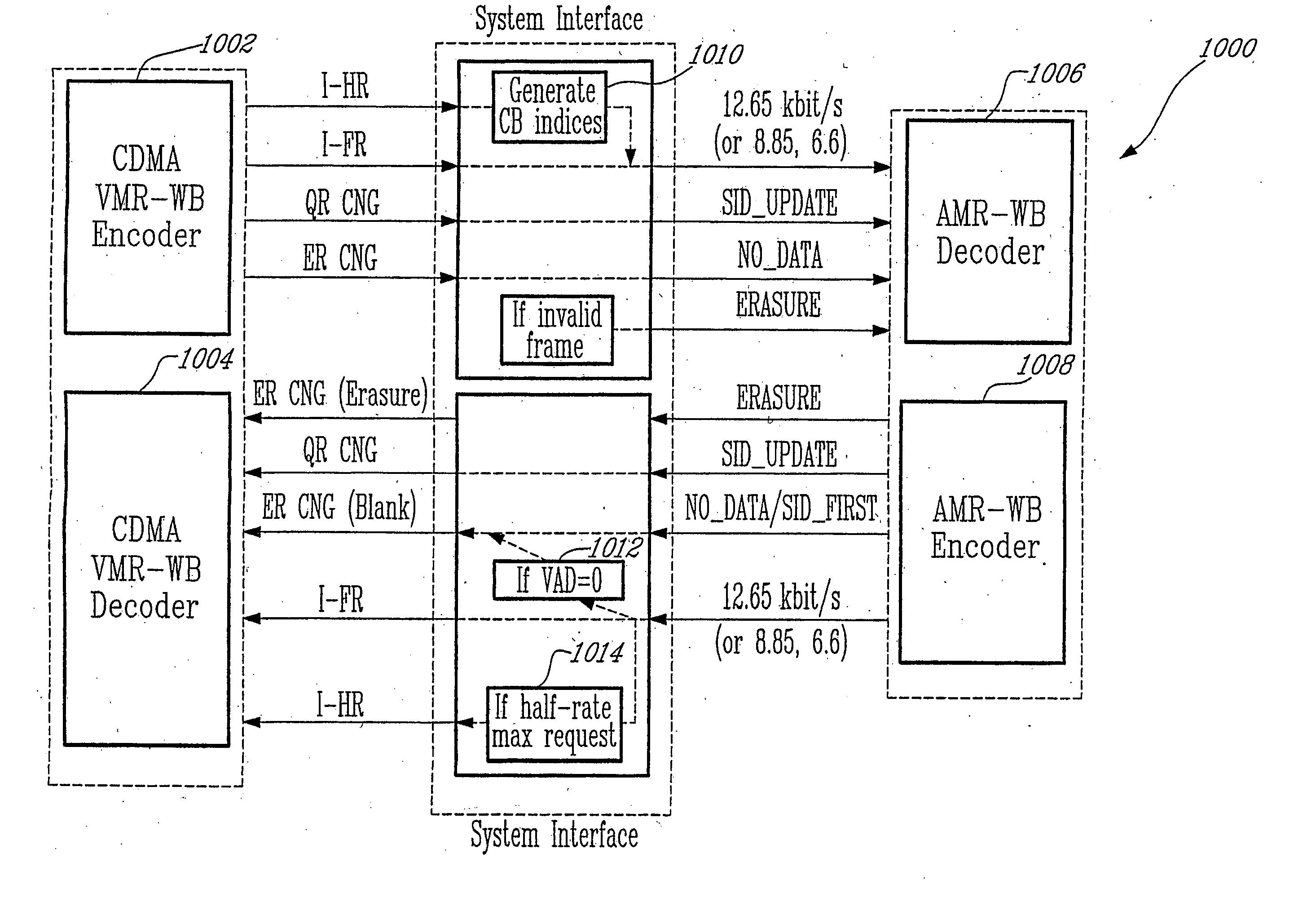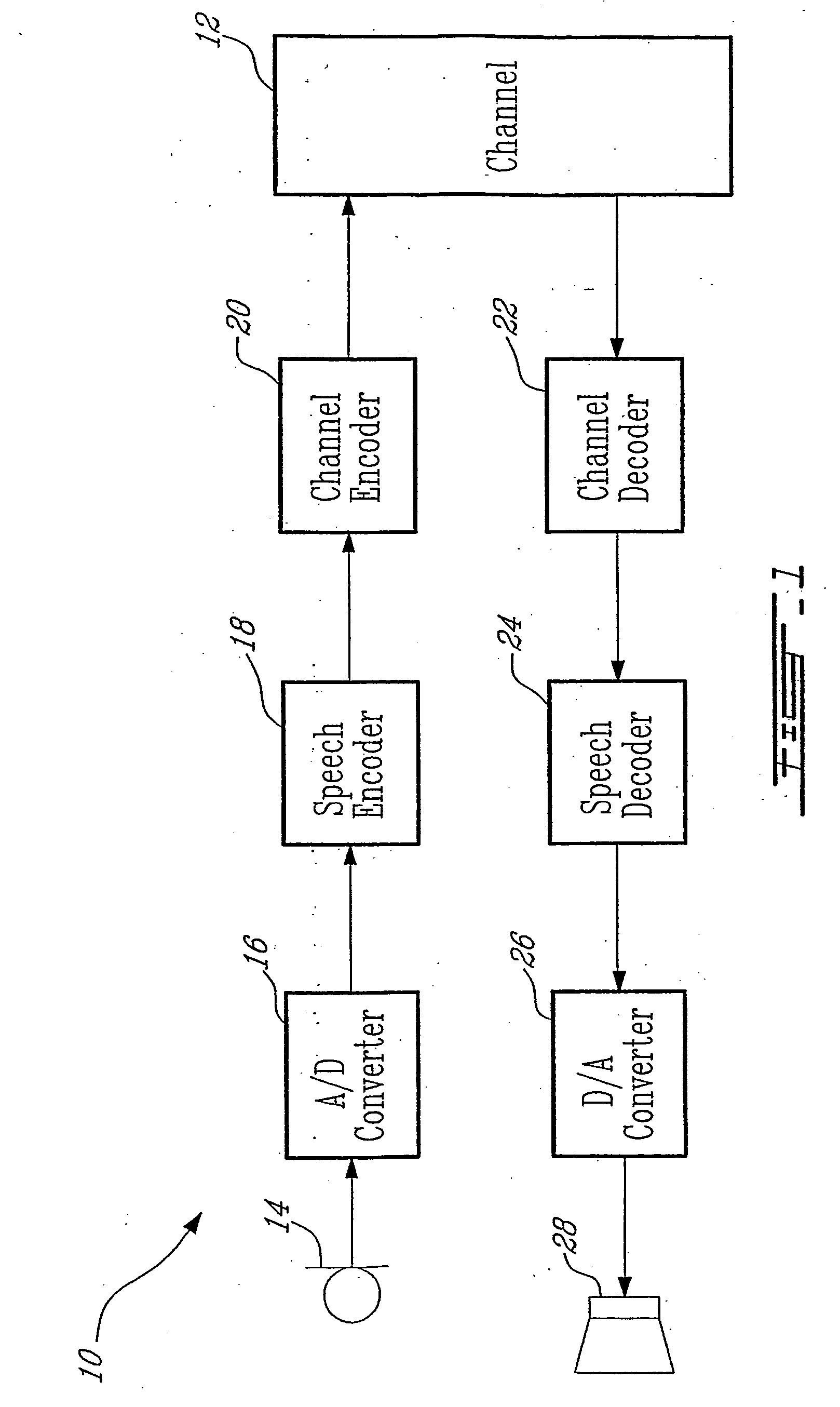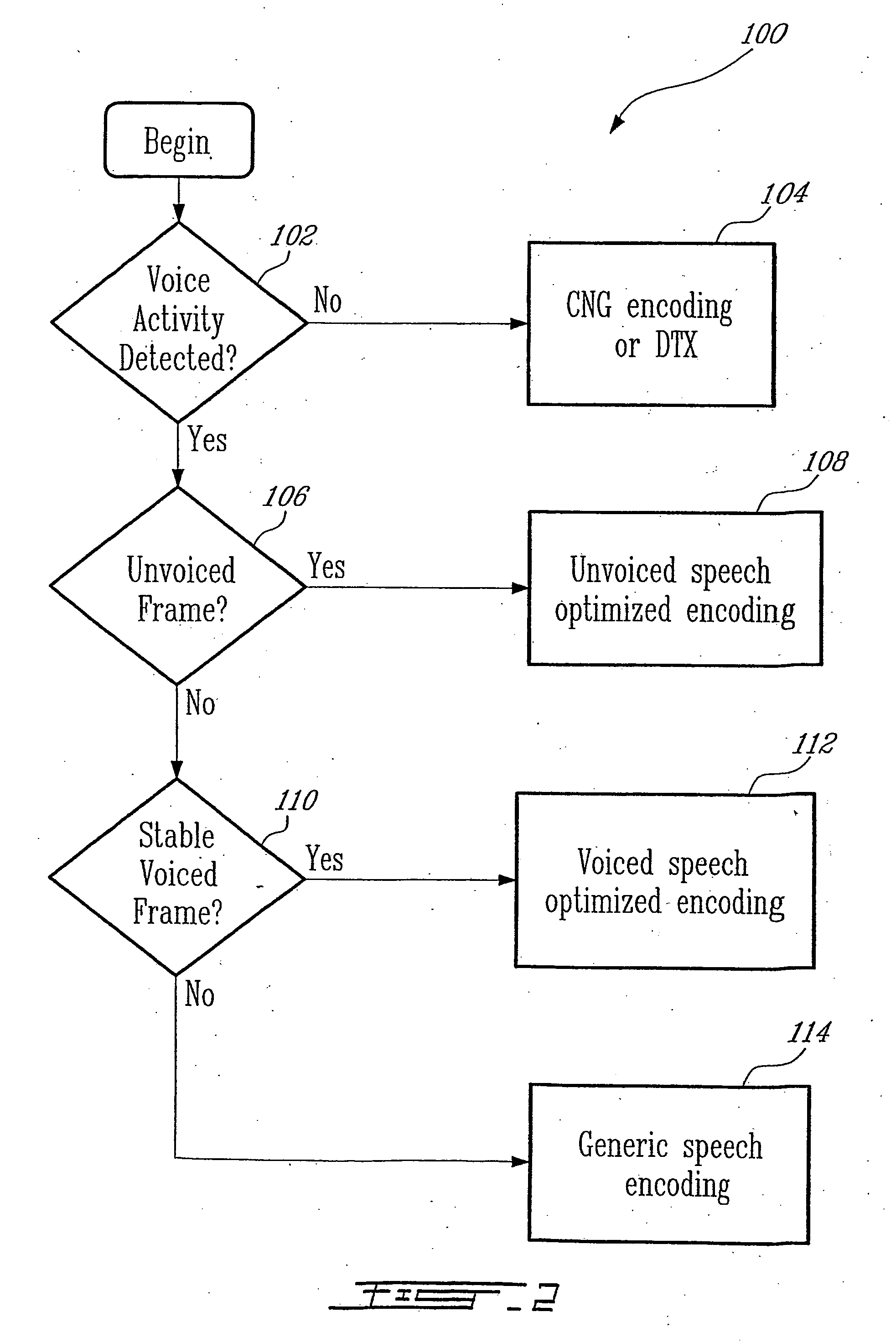Method for interoperation between adaptive multi-rate wideband (AMR-WB) and multi-mode variable bit-rate wideband (VMR-WB) codecs
a multi-rate wideband and multi-mode variable technology, applied in the field of digital encoding of sound signals, can solve problems such as speech performance degradation, and achieve the effect of improving signal classification and efficient interoperation
- Summary
- Abstract
- Description
- Claims
- Application Information
AI Technical Summary
Benefits of technology
Problems solved by technology
Method used
Image
Examples
Embodiment Construction
[0050] Turning now to FIG. 1 of the appended drawings, a speech communication system 10 depicting the use of speech encoding and decoding in accordance with an illustrative embodiment of the first aspect of the present invention is illustrated. The speech communication system 10 supports transmission and reproduction of a speech signal across a communication channel 12. The communication channel 12 may comprise for example a wire, optical or fibre link, or a radio frequency link. The communication channel 12 can be also a combination of different transmission media, for example in part fibre link and in part a radio frequency link. The radio frequency link may allow to support multiple, simultaneous speech communications requiring shared bandwidth resources such as may be found in cellular telephony. Alternatively, the communication channel may be replaced by a storage device (not shown) in a single device embodiment of the communication system that records and stores the encoded sp...
PUM
| Property | Measurement | Unit |
|---|---|---|
| sampling frequency | aaaaa | aaaaa |
| sampling frequency | aaaaa | aaaaa |
| transmission | aaaaa | aaaaa |
Abstract
Description
Claims
Application Information
 Login to View More
Login to View More - R&D
- Intellectual Property
- Life Sciences
- Materials
- Tech Scout
- Unparalleled Data Quality
- Higher Quality Content
- 60% Fewer Hallucinations
Browse by: Latest US Patents, China's latest patents, Technical Efficacy Thesaurus, Application Domain, Technology Topic, Popular Technical Reports.
© 2025 PatSnap. All rights reserved.Legal|Privacy policy|Modern Slavery Act Transparency Statement|Sitemap|About US| Contact US: help@patsnap.com



